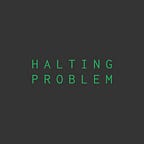Facebook’s Happiness Team Doubles Key Metrics By Banning Unhappy Users
FACEBOOK HEADQUARTERS, MENLO PARK — In a press conference this morning, Facebook announced that it has more than doubled user happiness by kicking all the unhappy users off of Facebook.
Aaron Chen, lead of Facebook’s Happiness Team, told journalists, “We here at Facebook are sensitive to how our users perceive us. It’s not enough to just build something that people use. We want our users to love using Facebook, to have a delightful experience when they go to see what their friends are doing. And our team found that the easiest way to do that was to ban all the people who don’t like Facebook.”
According to Mr. Chen, the Facebook Happiness Team was started in 2013 in response to a study that found that Facebook made users sadder and less satisfied. Senior executives were concerned that users would become happier and more satisfied by spending time on sites that weren’t Facebook, “so our team was assembled to make Facebook, and therefore the world, a better place,” said Mr. Chen.
Team Happiness started off small, by showing users random motivational messages saying “Have a nice day!”, polling them on how happy they were with Facebook, and experimenting with showing happier or sadder posts on users’ news feeds. They soon had built extensive metrics and dashboard infrastructure to monitor the happiness of Facebook users in real time. The logical next step was to use increasingly complex machine learning models and aggressive A/B testing to optimize its key metric: average user happiness.
After months of data driven experimentation, Team Happiness discovered that users enrolled in one A/B test in particular had a significant increase on user happiness compared to the norm.
“We initially thought we would have to implement more complicated features, but the data showed that there’s actually a lot of low hanging fruit. By hiding all the Facebook posts from unhappy users, our metrics jumped 50% almost overnight,” said Mr. Chen. “Users in the experiment bucket exhibited a 77% increase in likes, comments and shares and were 15% more likely to click on ads. As a result, we decided to just ban all the unhappy users, since they didn’t seem to be doing anything useful anyway. It seemed more impactful to focus on pushing only happy users through the growth funnel.
“After we rolled out the change, we found that users remained on the site for 3 minutes on average compared to 30 seconds previously, and our sitewide CTR jumped by 35%. It was completely hockey stick growth. Our VP told us that we hit our Q2 goals a month early, so she’s going to take our whole team to Vegas to celebrate.”
Team Happiness is already brainstorming new “proactive happiness” measures. Facebook’s Analog Research lab, responsible for the propaganda-style posters plastered all around the Facebook HQ, has printed special posters for Team Happiness with slogans like “Remember To Be Happy… OR ELSE” and “The Beatings Will Continue Until Morale Improves” so that the team can dogfood happiness experiments before rolling them out to users.
When asked about whether the Happiness Team’s new policies were in line with the company’s overall goals, Mr. Chen responded, “Of course. The only important metric that went down was monthly active users, but that’s the growth team’s problem, not ours. Besides, the company does better when we hit our KPIs, right?”
